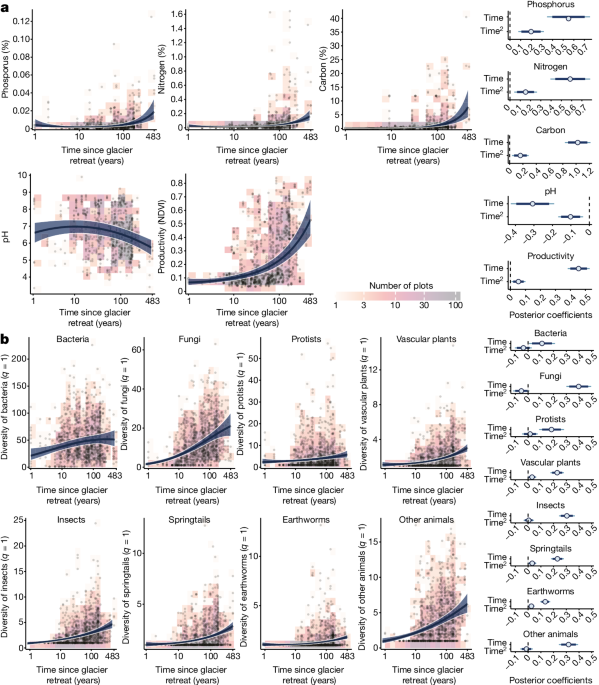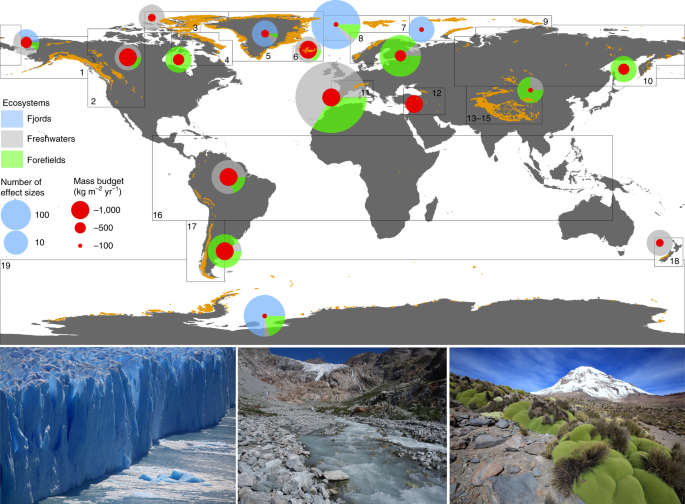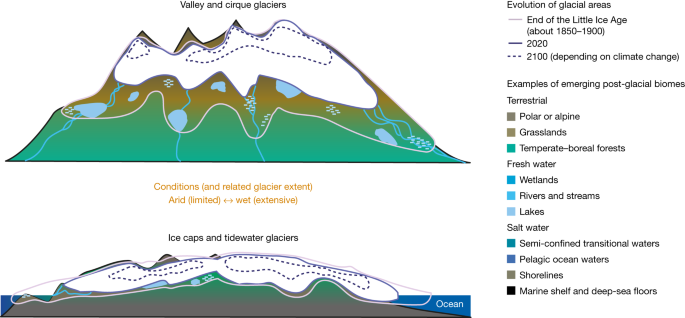
Glaciers play a crucial role in shaping ecological dynamics on Earth. Their retreat due to climate change is not merely a physical alteration of landscapes; it initiates complex biological and ecological processes that influence both local and global ecosystems.
Biodiversity and Ecosystem Formation

As glaciers retreat, they expose previously covered land, creating opportunities for new ecosystems to develop. This transformation leads to a rapid colonization by a spectrum of organisms starting with microorganisms and progressing to more complex life forms. Research has shown that life quickly moves into these new habitats, beginning with microorganisms such as bacteria and algae that thrive in the harsh conditions left behind by melting glaciers. Over time, hardy pioneer species like lichens, mosses, and grasses establish themselves, which pave the way for more diverse plant communities[5].
The retreat of glaciers encourages an intricate process of ecological succession, where an initial increase in biodiversity is observed. For example, studies indicate that in the early stages of glacier retreat, there is a significant rise in plant diversity, which subsequently enhances the diversity of associated animal life, including pollinators[4][5]. Specifically, within the first few decades post-retreat, scientists have documented an increase in both plant and pollinator diversity. Pollinators, such as bees and butterflies, depend heavily on the diversity of flowering plants that emerge in the glacier's foreland, illustrating the interconnectedness of these species within their ecological niche[4].
Impact on Water Resources

Glaciers also serve as vital freshwater resources. As they encapsulate substantial amounts of freshwater, they are significant for maintaining river flows and ecosystems during warmer months when snowmelt occurs. The meltwater from glaciers feeds rivers, which rely on consistent flow for the survival of numerous species and the health of ecosystems. Their decline poses a direct threat to the water resources of hundreds of millions of people and to biodiversity, especially in regions dependent on glacier-fed streams[2].
Climate Regulation and Soil Development

Moreover, glaciers contribute to Earth's climate regulation. They reflect sunlight and help maintain cooler temperatures in their surroundings. As glaciers shrink, the albedo effect diminishes, leading to increased absorption of heat by the Earth's surface, which further accelerates climate change. This progressive warming impacts not just the immediate area around the glaciers, but also broader climate patterns that affect ecosystems worldwide[1][3].
The newly exposed grounds left by melting glaciers undergo significant changes in soil properties over time. Key environmental traits such as soil temperature and nutrient availability evolve as more complex biological communities establish themselves[3]. Microorganisms play a vital role in this process by breaking down organic matter and aiding the development of fertile soils, which further facilitate the growth of plant life. This biodiversity enhances ecosystem services, such as nutrient cycling and carbon capture, crucial for combating climate change[5].
Plant-Pollinator Interactions

The relationships between plants and pollinators are also significantly influenced by glacier dynamics. Early in the succession process, as pioneer plants establish, they provide critical resources for pollinator species, which in turn help in plant reproduction through pollination. Studies have shown that initial increases in plant diversity stimulate pollinator success, creating robust interactions that foster healthy ecosystems[4][5]. However, as plant communities transition towards a state dominated by woody species, a decline in interaction diversity and overall biodiversity often follows, illustrating the delicate balance maintained within these ecosystems[4].
Conservation Implications
As glaciers continue to recede at alarming rates due to anthropogenic climate change, understanding their ecological role becomes increasingly urgent. The loss of glaciers corresponds to the loss of unique habitats for specialized species, which are often poorly adapted to change, making them vulnerable to extinction. Hence, conservation strategies must consider both the protection of glacial environments and the management of biodiversity in newly formed ecosystems[4].
Efforts to enhance and sustain plant diversity in these ecosystems can help mitigate the negative effects of glacier retreat. By prioritizing areas of high interaction diversity, such as pioneer grasslands, conservation strategies can foster ecological resilience, promoting healthier ecosystems capable of withstanding ongoing climate change impacts[4][5].
Conclusion
Glaciers are not just significant ice formations; they are catalysts for biodiversity and ecological dynamics. Their retreat triggers a cascade of changes that affect species interactions, nutrient cycling, and water resources. Understanding and protecting these processes are crucial in the face of climate change, ensuring the continued resilience and vitality of our planet's ecosystems.
Get more accurate answers with Super Pandi, upload files, personalized discovery feed, save searches and contribute to the PandiPedia.
Let's look at alternatives:
- Modify the query.
- Start a new thread.
- Remove sources (if manually added).